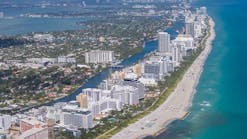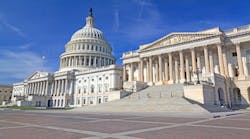Hallelujah! 179D is finally permanent!
A decade-and-a-half ago, Congress passed the Energy Policy Act of 2005 (EPAct 2005). It was the first major energy law enacted in more than a decade, and gave the most authority to the Federal Energy Regulatory Commission (FERC) since the Federal Power Act of 1935 that was included in the New Deal.
In my opinion, the commercial buildings energy efficiency tax deduction was one of the most significant provisions of EPACT 2005. Known as 179D (referring to Sec. 179D of the Internal Revenue Code), this benefit enabled the owners of commercial buildings to claim a tax deduction for installing renewable energy and/or qualifying energy saving systems and equipment.
To download our new Clark's Remarks e-Book, 'Sustainable Frontiers, 2020', click here.Since 179D first became effective on January 1, 2006, it has expired and been retroactively renewed several times. In fact, the inaugural Clark’s Remarks, in June 2013, advocated for replacing the expiring EPAct 2005 with the Commercial Building Modernization Act. That act would have extended the 179D deductions for another three years, increased the maximum deduction from $1.80 per square foot to $3.00 per square foot — or, in the case of a building 10 years or older, $4.00 per square foot — and would have also extended the benefit to private non-profit entities and REITs. Unfortunately, it died in committee. Fortunately, the Tax Increase Prevention Act of 2014 retroactively extended 179D through December 31, 2014, but with no change to the $1.80 per square foot maximum deduction (incidentally, that is the same rate currently in effect, since it has not increased in 15 years).
Set to expire again at the end of this year, the Consolidated Appropriations Act, 2021, passed by Congress on December 21st and finally signed by the president on December 27th, made 179D permanent. The new legislation provides for an inflation adjustment – indexing it to the cost-of-living -- to the $1.80 per square foot amount for taxable years beginning after 2020. It also updates the governing ASHRAE standard to “Reference Standard 90.1”, which means that the property would need to use the most recent ASHRAE Standard 90.1.
For those of us that own or work with commercial buildings, this was a great way to start the new year. Not only does 179D encourage building owners to reduce their property’s energy consumption, reducing their carbon footprint and helping the environment, it also provides revenue to small engineering firms like ours, that perform the requisite energy modeling to assist their clients in qualifying for the benefit.
Happy New Year!
##########
A regular contributor to HPAC Engineering and a member of its editorial advisory board since 2012, Larry Clark, LEED AP, O+M, is a principal at Sustainable Performance Solutions LLC, a south Florida-based engineering firm focusing on energy and sustainability. Email him at [email protected].









